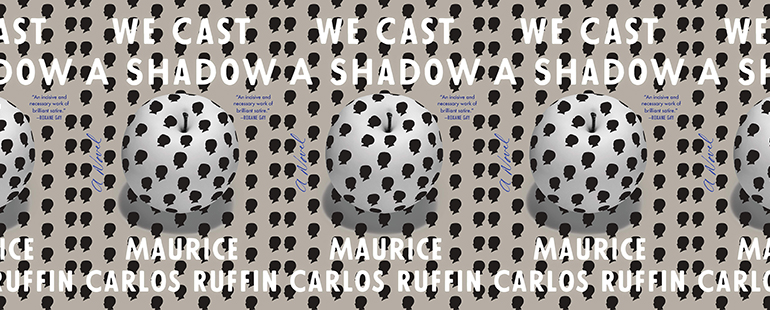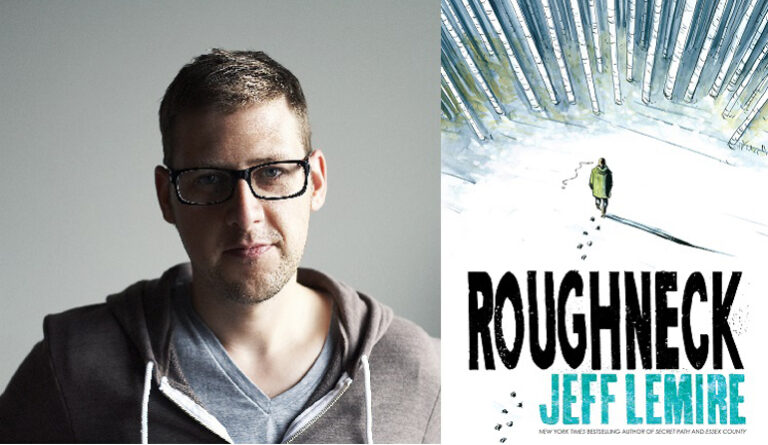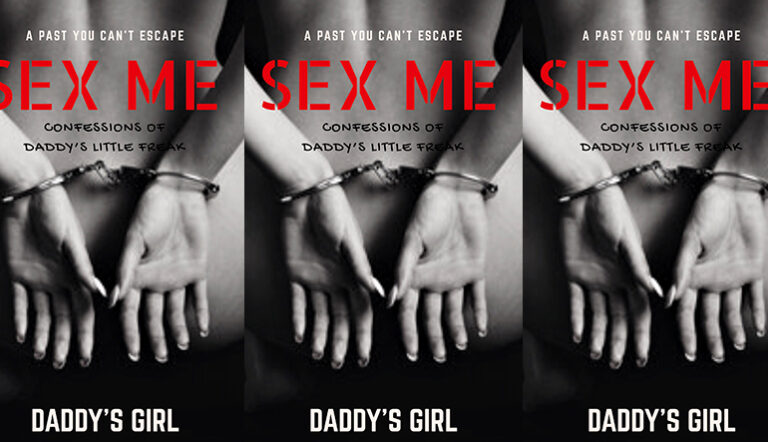Inherited Trauma in We Cast a Shadow

Maurice Carlos Ruffin’s debut novel, We Cast a Shadow, follows a nameless narrator who tries to protect his son from the dangers of the world. The narrator thinks his son, Nigel, is white-passing, except for a “birthmark” on his face. The father’s biggest fear is that Nigel will deal with all the hardships that come with being black due to the birthmark—the birthmark that came from his side of the family. The narrator wants his son to have surgery to remove the mark—surgery so effective that it will remove the possibility of future generations inheriting the mark, as well. But what the narrator doesn’t realize is that he is only thinking surface level. Skin deep. What the narrator doesn’t fully comprehend is that he is worried about his son inheriting trauma from him. Inheriting something that cannot be wiped away.
Inherited trauma is the idea that trauma and grief can be passed on to your next of kin, regardless of whether your progeny also experienced the traumatic event. Research has shown, for example, that people taken prisoner during the United States’s Civil War had kin with a higher mortality rate, regardless of class, race, etc., than people who were not taken prisoner. Research has also shown that these effects were more apparent in male descendants, whose genes seemed to more acutely hang on to trauma.
While never explicitly stated, We Cast a Shadow deals with inherited trauma. Inherited trauma is weaved into the story through the perspective of a narrator who thinks only in the physical world, who deflects consideration of anything greater than what is skin deep. This trauma is shown in scars, and is hidden in ghosts.
When talking about his son’s birthmark, the narrator compares it to an island. He states his fear that “these islands will merge to form a continent. The lesser smudges, they’re just ordinary freckles. But what image would emerge if I traced those dots? His mother’s face? Our home? A playground viewed from a hilltop?” He manifests his fear in the physical. As if the skin color, black, is the problem. But that is not the problem. The trauma comes from somewhere else. The narrator, though, shirks the opportunity to meet with it. He gets close, wondering if he was “also among the marked,” but doesn’t press further. He worries of the mark making an island, a home, on his face. He worries about traced marks, but he doesn’t trace the trauma of the inheritance. Of the self-hatred and racism that has infected him, passed on from generation to generation. He doesn’t connect how the birthmark on his son is a scar that came to bear from the trauma in his own life.
When Mama, the narrator’s mother, talks to him, she warns him that he is “losing” himself: “Your heart. Your roots. Like another man I know.” Mama has faced her fair share of trauma. But she faces it daily. She holds onto her arm when referencing Sir, the narrator’s father. Beneath her hand is a scar, evidence of a traumatic moment in the narrator’s life. The narrator, however, is blind to it. Living in his perspective, the scar is erased. Instead, he sees Mama as if she were “trying to take herself apart.” Mama, however, holds on to the scars that have gripped her. Mama says, “It’ll break me if you let whatever is chewing on you hurt that boy.” She sees the traumatic inheritance that awaits Nigel. She knows that the men before the narrator were eaten. And she senses how the trauma before and during his life chews on him now. And how that trauma can have an appetite for the next of kin.
Mama struggles with her scar. At one point, she “gripped her forearm and rotated her fingers around it in a wrenching motion, a habit of hers since she was injured that one time.” Mama keeps feeling the pain. But this feeling lets her struggles see light. The narrator doesn’t have this clarity, and for that reason, something keeps “chewing” on him. He deflects, saying that “she hurt” her arm, not that something bad was done to her. The narrator says, “I didn’t want to think about how she hurt it all those years ago because that meant I’d have to think about what had happened to Sir.” He knows what he is doing. But he can’t avoid it. He asks Mama if it “still hurts from time to time,” showing how he ignores the pain of trauma. As if it hasn’t been there the entire time. As if he wasn’t still hiding his pain in the darkness where shadows can’t be cast. Meanwhile, it is not surprising that Mama responds, “’It never stopped.’” She honestly faces her struggle, while the narrator lets himself get chewed on without noticing.
When the narrator reveals a scar he has on his hand, it triggers the memory of a tragic event. He sees the white scar as a reminder of what happened. But unlike with Nigel’s birthmark, he doesn’t try to erase the discoloration. He instead tries to erase the part of him that isn’t discolored. He tries to make him and his entire family look like his scar. The world took a bite out of him, leaving him white where the teeth of the trauma sank in. He accepts the pain and color, based on his trauma. And he subconsciously passes that inheritance onto his son.
And it is not just the scars of the living that the narrator avoids. He also avoids the ghosts and thoughts of those no longer with him, which he pretends don’t haunt him. Early on in the novel, the narrator’s deflection is shown when Sir pops into his head for a brief moment. The narrator “pushed him out of the way,” as if the thought can be physically removed. In another moment, he describes trees that sprout up as “muffling the moans of displaced ghost clarinetists,” as if ghosts can be muffled from heaven. But despite telling the reader this, he is still aware of the ghosts. Just like how he can think he pushed Sir out of his mind despite Sir continuing to pop up in there. Sir is more present to the narrator than the birthmark is to his son. The narrator’s birth is marked by Sir. So is his life. So is everything.
Even when the narrator thinks about facing his father, he tries to deflect, talking to himself about Sir in terms of the spiritual, the not-real. He says, “You can’t tell me what to do from inside this place . . . . You’re just a ghost now.” In a later chapter, when the narrator is visited by a ghost that tells him what he should be doing, he doesn’t know how to handle it. Instead of embracing the ghost of a loved one, or trying to heed any advice, the narrator turns on all the lights, chasing the apparition away. Chasing the trauma away. Anything to avoid dealing with the wound that is bleeding him to death, that is costing him everything. When the ghost tells him, “You didn’t want to become your father. Hollowed out. Forgotten. . . . But it changed you, too,” the ghost speaks to inheritance. It speaks to the attempt to break the knot that has tied pain from one line to the next.
Later in the novel, the narrator says that “there are two states of being: living and living dead.” The narrator doesn’t realize he has become the living dead by avoiding his trauma. He views his trauma as scars that don’t hurt, as ghosts that don’t haunt. By targeting the birthmark instead of the trauma, he falls into the same trap that has captured many who have inherited and passed on the trauma of oppressed peoples. He does not realize that the trauma that he inherited and passed on is a mark born before his son’s birth, is a mark that make scars open up to wounds, and makes even ghosts hurt.
This piece was originally published on November 15, 2019.


